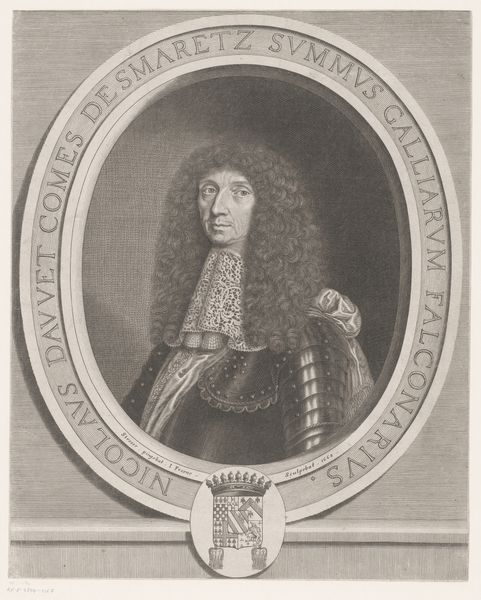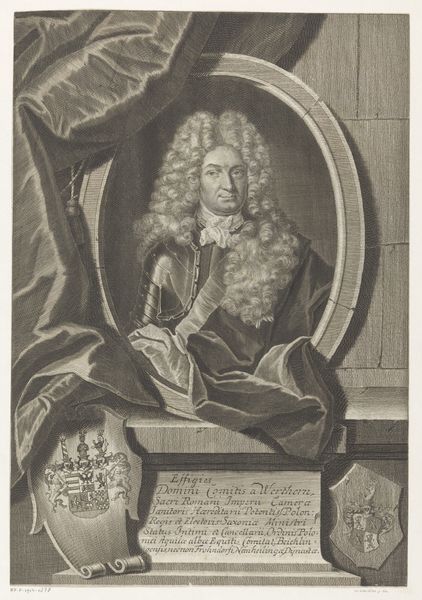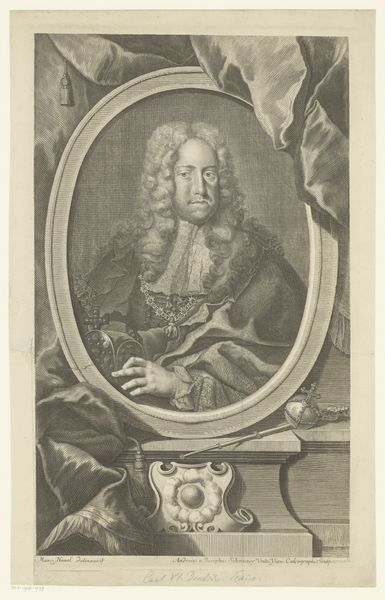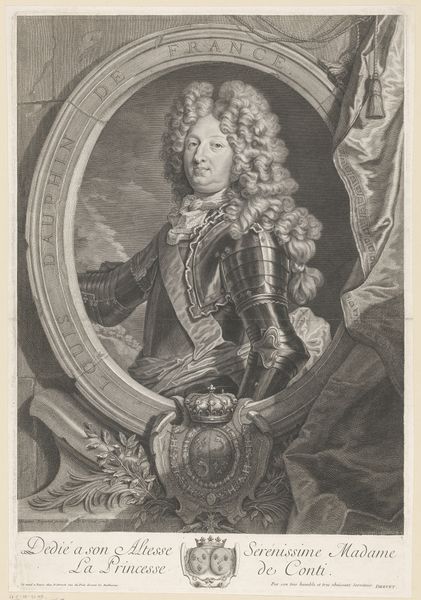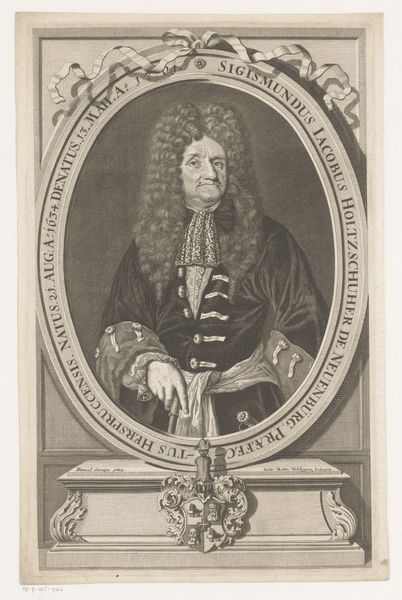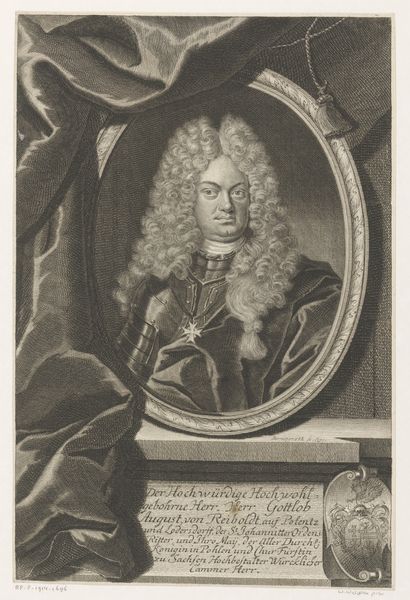
engraving
#
portrait
#
baroque
#
history-painting
#
academic-art
#
engraving
Dimensions: height 395 mm, width 298 mm
Copyright: Rijks Museum: Open Domain
Curator: Welcome to the Rijksmuseum. We're looking at Pierre Drevet's "Portrait of Antoine Portail," created between 1715 and 1736. It’s a baroque engraving. Editor: My first thought? Opulence. The swirling wig, the luxurious robes... it speaks volumes about status. Almost excessive, yet technically exquisite. Curator: Exactly. Drevet was a master of his craft, and portrait engravings like this were vital for disseminating images of power. Portail was, presumably, someone important to commission this. Look at the detail in the rendering; the way light and shadow define the face, the textures of the fur and fabric. It mirrors the aesthetic preferences of the time. Editor: It also reflects a certain hierarchy. Consider how these images functioned. They visually reinforced social standing and projected a very specific image of authority. The inscription "Illustrissimus Senatus Princeps," signals a prince of the senate, positioning him at the height of power. Who had access to these portraits? Whose stories weren't being told? Curator: Good points. These prints were accessible to a specific, literate, and wealthy audience. Printmaking facilitated a wider distribution compared to painting, but still within restricted circles. This particular print has two lions flanking the crest as well. Editor: That heraldry underscores belonging and heritage, things so integral to a noble identity. The use of lions too, the king of beasts as an emblem for someone considered elite, these were ways of asserting power and superiority. What does the art do, besides commemorate? It creates meaning! Curator: Precisely! And these images naturalized the social order. Understanding its function within the context of the Baroque period reveals not only artistic skill, but an ideological framework. Editor: So as beautiful and as impressive the piece is, we must also acknowledge its place within systems of inequality and access, and consider who is celebrated and who is systematically omitted. Curator: Absolutely, we’re always challenged to be critical viewers, to investigate these visual narratives with care, and see who held, and still holds, the brush, or in this case, the burin. Editor: Yes, to engage and consider, question, explore!
Comments
No comments
Be the first to comment and join the conversation on the ultimate creative platform.
